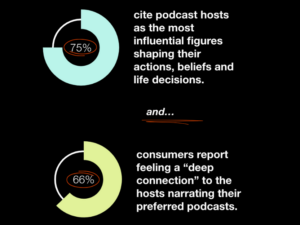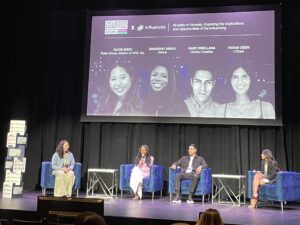October 24, 2023 / Thought Leadership
Opinion: The Forgotten “P” in Higher Education Needs Marketing at the Table
Gene Begin, Managing Director, CP Education
Higher education has undergone a remarkable transformation in recent years, whether it’s the ongoing demographic shift, the change in student and family expectations on the value of a degree, or the shifts in modality, exacerbated by the pandemic and advancements in technology. As colleges deal with this evolving landscape, and many simultaneously strive to find stable financial footing, they often find themselves evaluating their portfolio of programs. And while higher ed loves to call them “programs” to steer away from marketing language, let’s be clear. Programs are the “product,” the forgotten element of higher education marketing’s Four P’s.
Constituents on campus and beyond typically look to the marketing team for “promotion,” but let’s remind ourselves that there are Four P’s of marketing, with “place” and “price” being additions to the aforementioned “product” and “promotion.” Marketing leadership typically has expertise in market analysis, strategic planning and communication, always thinking about the audience first. Institutions build programs with two primary audiences in mind, students and employers, so who better to help strategize on programs than a leader who puts the consumer first in everything they do?
Today, we’ll leave thoughts on “place” and “price” for another time, so let’s focus on the benefits marketing leadership can provide in program development:
Identifying Student Demand by Conducting Market Research
Understanding the demand for a particular program can significantly impact enrollment expectations. The shifts in demographics and the shifts in interests of different generations can help you identify emerging program ideas. Students and families expect programs to deliver tangible outcomes such as employability and career advancement, so understanding the needs of employers is table stakes. Additionally, evaluating industry data as well as institutional insights, such as enroll and non-admit information on your applicants’ majors that went to other institutions, could provide an understanding of new program potential.
Most marketing teams conduct primary market research at least every three to four years in addition to any ongoing brand studies. This research can be a starting point for program managers, but market research can also be conducted to determine which topics, subjects and programs are likely to attract prospective students and their families and meet the needs of today’s employers. Identifying trends and assessing demand can limit the risk of investing in programs with limited market potential.
Benchmarking Competition to Craft Compelling Messaging
In a crowded higher education marketplace that has turned into a commodity in the eyes of many consumers, it is very difficult to be distinctive. Not many colleges or universities can say they are distinct, but every college and university can differentiate from their top competitors. Marketing leaders can help assess how a program compares to its competitors and recommend potential variations or niche elements of the program vision that may generate a higher level of interest.
Successful programs require more than talented faculty and a well-intentioned curriculum. They need a compelling value proposition that resonates with prospective audiences and current students and communicates the key features and benefits provided by the new program. In fact, identifying a message that may differentiate from competitors is critical to help stand out. The positioning of the program from the competitive benchmarking will help institutions develop that primary message.
Integrating Targeted Program Marketing Into Brand Strategy
Programs are often created without integrated marketing and brand strategy in mind and that can be a serious detriment when the program is ready for the old reliable “P,” which is “promotion.” A new program is typically provided with a “marketing” allocation as part of its draft budget to help get “butts in seats.” First of all, it is likely not enough budget to build the brand of a new program on its own.
Secondly, there may be other budgets to leverage. Marketing leadership is often planning for the fiscal year far in advance to ensure that an integrated marketing campaign can holistically impact the institution and maximize visibility for its multiple programs. A new program can be an energizer to an integrated campaign, but its effectiveness can be exponentially more impactful if coordinated as part of a two-pronged brand marketing and enrollment strategy. The right marketing strategies reaching the right audience at the right time to inspire the right action can only be done through coordination, communication and collaboration. The analogy, “A rising tide lifts all boats,” is over-used for a reason; because it is accurate.
Change isn’t easy but product evaluation and evolution are critical to shaping the future of any institution. In fact, the evaluation of program offerings is an exercise that higher education institutions have been doing since their inception. But too often marketing leaders do not have a seat at the table early enough to help with program development. Rather than pulling our chief marketing and communications officers in to communicate and help community-manage stakeholder feedback after the announcement of the program evolution, let’s proactively plan to maximize program visibility and positively impact enrollment. I mean, those were the original objectives for the new program development anyway, weren’t they?
 brief us?
brief us?






 At CP, we are always asking “why?” We’re fascinated and ever curious about customer mood and mindset. Here’s a few observations and constructive fodder for discussion from our anthropology and strategic planning teams from this past quarter.
At CP, we are always asking “why?” We’re fascinated and ever curious about customer mood and mindset. Here’s a few observations and constructive fodder for discussion from our anthropology and strategic planning teams from this past quarter. Observation:
Observation:  Observation:
Observation:  Observation:
Observation:  Observation:
Observation:  Observation:
Observation: 

 Observation: Digitally native consumers understand & expect technology to be seamlessly integrated in their interactions with brands. New digital tech has enabled more immersive and personalized customer experiences.
Observation: Digitally native consumers understand & expect technology to be seamlessly integrated in their interactions with brands. New digital tech has enabled more immersive and personalized customer experiences. Observation:
Observation:  Observation:
Observation: Observation:
Observation:  Observation:
Observation: Attending industry conferences is like diving headfirst into a whirlpool of knowledge, surrounded by the latest trends and cutting-edge ideas. Recently, I had the privilege of attending the Influencer Marketing Show in the heart of New York City, where thought leaders, marketers, and influencers converged to discuss the ever-evolving dynamics of the creator economy. In this blog, I’ll share some of the key takeaways from the conference and discuss how they can help to shape the exciting future of influencer marketing.
Attending industry conferences is like diving headfirst into a whirlpool of knowledge, surrounded by the latest trends and cutting-edge ideas. Recently, I had the privilege of attending the Influencer Marketing Show in the heart of New York City, where thought leaders, marketers, and influencers converged to discuss the ever-evolving dynamics of the creator economy. In this blog, I’ll share some of the key takeaways from the conference and discuss how they can help to shape the exciting future of influencer marketing. Advertising is undoubtedly a fast-moving, always-adapting industry that keeps you on your toes. Staying up to date with the latest trends is extremely important to ensure you aren’t left in the dust. That’s why professionals from across the digital marketing, media, and advertising industries gather each year for
Advertising is undoubtedly a fast-moving, always-adapting industry that keeps you on your toes. Staying up to date with the latest trends is extremely important to ensure you aren’t left in the dust. That’s why professionals from across the digital marketing, media, and advertising industries gather each year for 